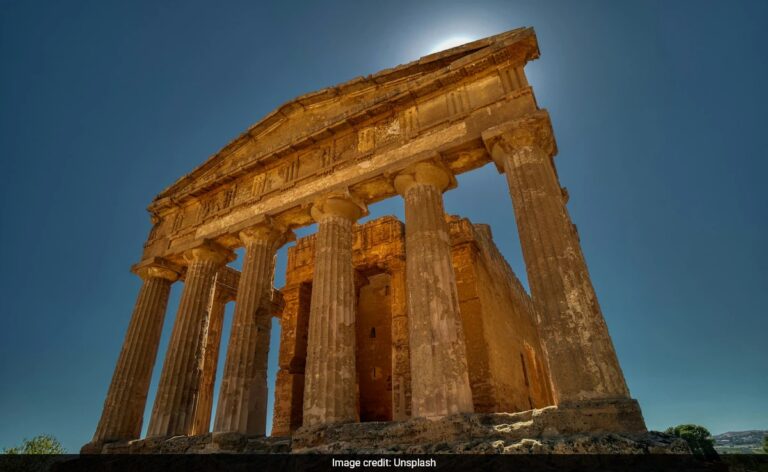Sicilian hilltop town Agrigento, home to the famous Valley of the Temples, is a history buff’s haven. Amazingly, its underground labyrinth of ancient aqueducts still functions and flows water. But a harsh reality mars this appeal: both these historical wonders and the modern water system are facing severe low water levels, forcing small hotels and guesthouses in Agrigento and nearby coastal areas to turn away tourists, unable to guarantee basic amenities like functioning toilets and showers, especially important after hot summer days, CNN reported.
The cause of the water crisis is a relentless drought. In February, Sicily declared a state of emergency and imposed water restrictions. Leaks and outdated infrastructure have made the situation worse. The shortage is having a huge impact on tourism and agriculture, the lifeblood of the Sicilian economy.
More than one million people in 93 communities now face water rationing and, in some areas, mandates to reduce consumption by up to 45%. Water management has become a daily challenge as scheduled water runs and night-time water cuts have become the new normal.
Tourists using platforms such as TripAdvisor have expressed concern about visiting drought-hit areas of Sicily, and hotels have been upfront with guests about possible water shortages and offering alternative locations with less strict regulations.
One example is Le Cinque Novelle, a bed and breakfast in central Agrigento: Faced with tough restrictions, the owners installed water-saving filters in showers and sinks, but despite these efforts, guests continued to complain.
“Obviously, people ask for reassurance before they come and we don’t know what to say,” B&B owner Giovanni Lopez told CNN. “This situation is rapidly affecting the entire tourist accommodation industry and we fear there will be serious economic consequences, given that almost everyone in this part of Sicily depends on tourism.”
The Sicilian government has asked the Italian government for financial support to import water from mainland Italy, but no concrete solution has yet been found, the media reported. The Sicilian government’s tourism minister’s office has not responded, but in April it proposed diversifying Sicily’s tourist season to ease the burden during the summer, when water shortages are most severe.
For many, the Sicilian summer is becoming a test of endurance: Wildfires ravaged the island last year, forcing tourists to evacuate or postpone visits, and now drought-induced water shortages are adding further uncertainty.
Human-induced climate change is causing temperatures to rise in Europe, and Sicily is at the epicenter of that change. The island holds the ignoble record for the hottest temperature in Europe, setting a scorching record of 48.8 degrees Celsius (119.8 degrees Fahrenheit) in Syracuse in August 2023.
While the rest of Italy is suffering from drought, Sicily is the only island to be classified as “extreme,” the most severe, according to the Italian National Institute for Environmental Protection (ISPRA).
ISPRA reports that winter rainfall has fallen by more than 75 percent and that around 20 percent of Sicily’s underground aquifers are in a “water deficit,” prompting the regional government to declare an irrigation and drinking water emergency in Agrigento and four other regions, which is expected to last until the end of the year.
Nicola Faruggio, president of the Sicilian Hotel Federation, told CNN that hotels are now required to stockpile a certain amount of water depending on their capacity, and that going forward, they will have to buy water from the mainland.
The situation is just as bad for hoteliers as it is for farmers. On an organic farm near Caltanissetta in central Sicily, where goats drink from a muddy sledge that was once a pond, the lack of water is forcing farmers to make a dire choice: cull their flocks or let them die of hunger and dehydration.
Today’s Featured Video
Hathras riots, hoarding collapses, liquor tragedies: when will we learn the value of human life?

